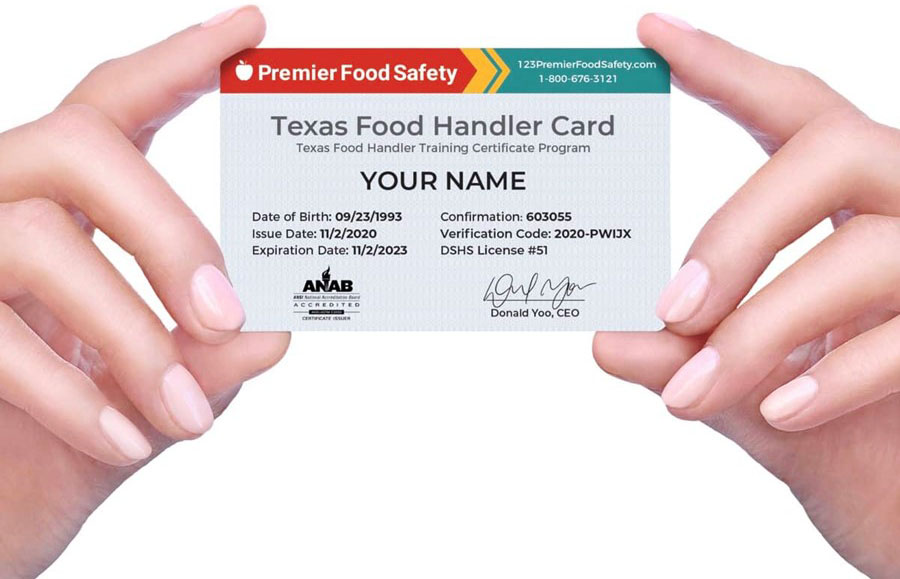Exactly How to Obtain Your Food Trainer Certification Swiftly and Easily
Getting your food handler certification can seem overwhelming, but with a critical strategy, it can be achieved effectively. Classes For Food Handlers. What are the most effective approaches to make certain not only an effective accreditation yet also continuous compliance in the ever-evolving landscape of food safety and security?
Understand Certification Requirements
Getting a food handler certification requires a clear understanding of the specific needs stated by neighborhood wellness authorities and regulatory firms. Each territory may impose different criteria and expectations, so it is essential to research the regulations applicable to your location. Normally, these requirements consist of finishing an authorized training program, passing an accreditation test, and in some cases restoring the qualification periodically.
First, acquaint yourself with the local legislations controling food safety and security and handling. This may include checking out the web site of your regional health department or calling them straight for advice. Additionally, some areas may have specific age demands or instructional requirements, such as a minimal degree of education.
When you understand the demands, guarantee that the training program you select is identified by your local health and wellness authorities. This acknowledgment assures that the educational program fulfills the necessary guidelines for reliable training in food safety and security methods.
Choose the Right Program
How can you make sure that you pick the most suitable food trainer accreditation program for your needs? Start by evaluating the program's certification. Verify that it is identified by your regional wellness division or regulative body, as this ensures the certification will be valid for work in your location.
Following, take into consideration the style of the course. Some individuals may prefer in-person training for its interactive components, while others may select on the internet training courses for ease and versatility. Testimonial the program content to ensure it covers important topics such as food safety concepts, personal hygiene, cross-contamination, and correct food storage space.
Inspect the period of the program and guarantee it aligns with your timetable. By carefully analyzing these elements, you can select a food handler certification course that meets your particular requirements and prepares you sufficiently for your role in the food solution industry.
Total the Training
Upon picking the suitable food handler accreditation program, the next vital action is to complete the training. This training is created to outfit you with necessary understanding pertaining to risk-free food taking care of practices, hygiene, and sanitation methods. A lot of courses supply a combination of on the internet modules, video clips, and interactive tests, permitting a versatile understanding experience that can be customized to your timetable.
It is imperative to involve fully with the product presented. Remember, take part in conversations, and be proactive in looking for information on complicated topics. Some courses may likewise provide study or real-life scenarios to enhance your understanding. This sensible application of knowledge is crucial, as it prepares Classes For Food Handlers you for the obstacles you may deal with in a food solution setting.
In addition, ensure that you assign enough time to finish each module completely prior to going on to the following. Rushing through the material can cause voids in understanding, which might impede your efficiency in future assessments. Finishing the training with diligence will not just facilitate a smoother shift to the next actions in getting your certification but likewise make sure that you are well-prepared to copyright food safety criteria in your professional function.
Pass the Qualification Examination
After effectively completing your food trainer training, the next essential action is to pass the accreditation exam. This evaluation is created to assess your understanding of food safety principles, practices, and guidelines that are important in the food solution industry.
To prepare successfully, review the products provided throughout your training extensively. Emphasis on vital subjects such as appropriate food storage, hygiene techniques, cross-contamination prevention, and personal hygiene requirements. Several training programs use practice tests, which can considerably improve your preparedness for the real exam.


When taking the accreditation examination, ensure you understand the layout-- whether it consists of multiple-choice concerns, true/false statements, or useful scenarios. ServSafe Food Handler. Read each question very carefully and manage your time wisely, enabling for cautious consideration of each solution
If you come across tough questions, do not be reluctant to get rid of clearly inaccurate alternatives to enhance your chances of selecting the appropriate solution. After finishing the test, assess your solutions if time licenses.

Maintain Your Qualification
Keeping your food trainer accreditation is essential for ensuring ongoing compliance with market standards and regulations. Accreditation commonly features certain requirements, including revival timelines and proceeding education and learning. It is important to stay notified concerning these obligations to avoid gaps in your credentials.
Most jurisdictions require food handlers to renew their accreditation every three to five years. This procedure frequently includes completing a correspondence course or re-taking the accreditation test. Routinely checking your certification's expiry day can assist you prevent any kind of potential interruptions in your ability to operate in food service.
Additionally, remaining upgraded on finest practices and changes in food safety and security laws is important. Taking part in workshops, going to market workshops, or subscribing to relevant newsletters can enhance your expertise and maintain you informed about the current patterns and compliance demands.
Lastly, keeping a clean record in food dealing with practices is equally essential. File any kind of cases, training sessions, and ideal techniques you implement at your workplace, as this can act as a valuable resource throughout revival or evaluations. By proactively participating in these practices, you make certain not just the stability of your accreditation yet likewise the security and complete satisfaction of your customers.
Verdict
Acquiring food handler certification entails an organized strategy that includes understanding neighborhood demands, picking an ideal training course, completing training, and passing the qualification exam. By adhering to these steps faithfully, individuals can ensure they are geared up with the required expertise and skills to support food security criteria in their respective settings.
Just how can you make sure that you select the most suitable food trainer qualification program for your needs? Evaluation the course material to guarantee it covers vital subjects such as food safety and security concepts, individual hygiene, cross-contamination, and appropriate food storage space.
By very carefully assessing these aspects, you can select a food trainer qualification program that meets your details needs and prepares you sufficiently for your duty in the food service market.
Upon picking the suitable food handler qualification training course, the next vital action is to finish the training.Obtaining food trainer qualification involves a methodical strategy that consists of understanding local requirements, choosing a suitable course, finishing training, and passing the accreditation test.